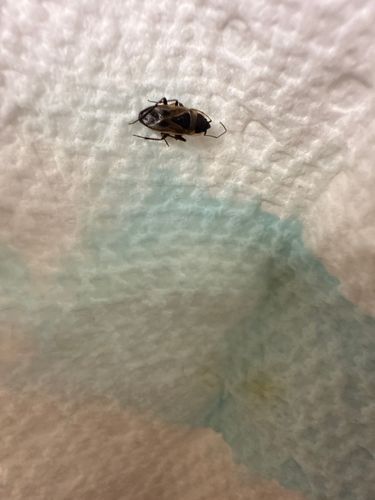Brown Marmorated Stink Bug
Scientific Name: Halyomorpha halys
Order & Family: Hemiptera (True Bugs), Pentatomidae (Stink Bugs)
Size: 12-17 mm (0.5-0.7 inches) in length

Natural Habitat
Originally from East Asia (China, Japan, Korea, Taiwan), it has been introduced to North America and Europe. It is found in agricultural areas, orchards, gardens, and urban/suburban environments. During colder months, they seek shelter in homes and other sheltered structures.
Diet & Feeding
Polyphagous, meaning it feeds on a wide variety of plants. It is a major agricultural pest, feeding on fruits (apples, peaches, pears, berries), vegetables (tomatoes, corn, peppers, beans), and ornamental plants by piercing the plant tissue with its mouthparts and sucking out plant juices. This feeding causes cosmetic damage, necroses, and sometimes leads to fruit abortion.
Behavior Patterns
Known for congregating on the sides of buildings and entering homes in large numbers in late summer and fall to overwinter. When disturbed or crushed, they emit a strong, unpleasant odor, which is a defense mechanism. They are relatively slow-moving insects but can fly. Their life cycle typically involves egg, nymphal instars (5), and adult stages, with one to two generations per year depending on the region.
Risks & Benefits
Potential risks include being a significant agricultural pest, causing considerable economic damage to crops. While not known to bite humans or transmit diseases, their defensive stink can be unpleasant indoors, and large indoor infestations can be a nuisance. There are no known direct benefits of this invasive species in the regions where it has been introduced.
Identified on: 11/2/2025